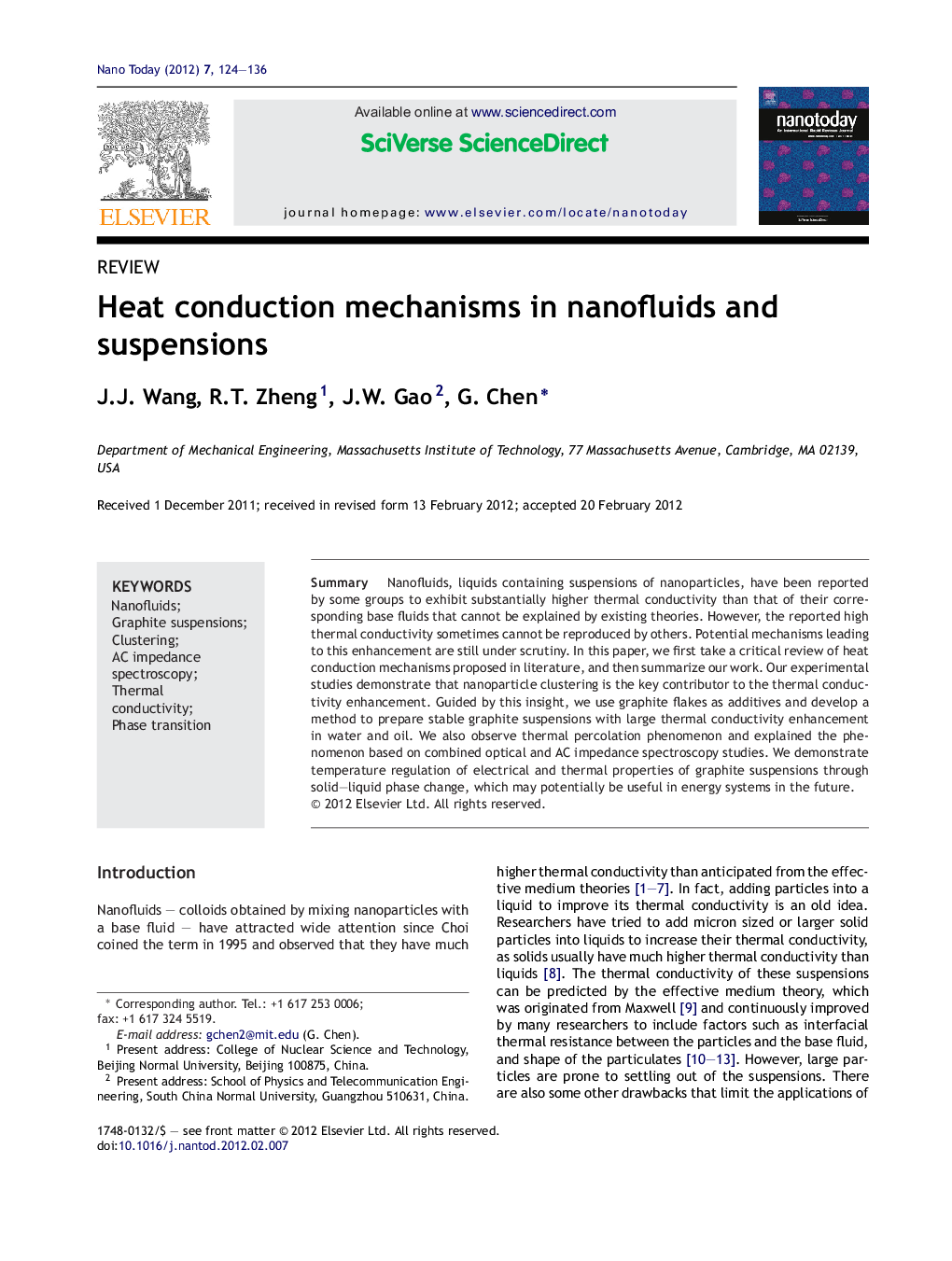| Article ID | Journal | Published Year | Pages | File Type |
|---|---|---|---|---|
| 32200 | Nano Today | 2012 | 13 Pages |
SummaryNanofluids, liquids containing suspensions of nanoparticles, have been reported by some groups to exhibit substantially higher thermal conductivity than that of their corresponding base fluids that cannot be explained by existing theories. However, the reported high thermal conductivity sometimes cannot be reproduced by others. Potential mechanisms leading to this enhancement are still under scrutiny. In this paper, we first take a critical review of heat conduction mechanisms proposed in literature, and then summarize our work. Our experimental studies demonstrate that nanoparticle clustering is the key contributor to the thermal conductivity enhancement. Guided by this insight, we use graphite flakes as additives and develop a method to prepare stable graphite suspensions with large thermal conductivity enhancement in water and oil. We also observe thermal percolation phenomenon and explained the phenomenon based on combined optical and AC impedance spectroscopy studies. We demonstrate temperature regulation of electrical and thermal properties of graphite suspensions through solid–liquid phase change, which may potentially be useful in energy systems in the future.
Graphical abstractFigure optionsDownload full-size imageDownload high-quality image (104 K)Download as PowerPoint slideHighlights► We experimental conclude that clustering of particles is the key mechanism for the thermal conductivity enhancement of nanofluids and suspensions. ► We synthesis stable graphite suspensions with large thermal conductivity enhancements. ► Thermal percolation phenomenon is observed in our graphite suspensions. ► Temperature regulation of electrical and thermal conductivity of graphite suspensions through liquid–solid phase transition is demonstrated.
